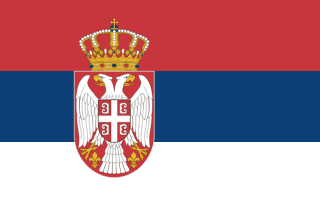Importing Used Cars from
Japan
to
Serbia
Regulations and Procedures

Introduction:
Importing used cars from Japan to Serbia requires thorough knowledge of the import procedures, rules, and regulations. This article will provide an overview of the factors to consider, the importation process, age restrictions and vehicle eligibility, import duties and taxes, required documentation and fees, shipping and customs clearance, compliance and modifications, registration in Serbia, tips for a hassle-free experience, and the benefits of importing cars from Japan to Serbia.
Factors to Consider When Importing a Car from Japan to Serbia:
Before purchasing used cars from Japan, it is crucial to familiarize yourself with the import procedures, rules, and regulations of your own country. Consider the following factors:
Year restrictions
Available shipping lines and ports
Estimated shipment time
Required inspections
Necessary documents for importing used cars
Popular used car models and import statistics from Japan
The Importation Process:
Importing a car from Japan involves understanding the laws, rules, and regulations and finding the appropriate channels. Follow these steps:
Study the importing laws of Serbia
Ensure proper cleaning and removal of gas from the vehicle
Consider vehicle age, technical requirements, and configurations
Understand import duties, fees, and taxes
Age Restriction and Vehicle Eligibility:
Different countries have specific age restrictions and eligibility criteria for imported vehicles. Serbia may impose age restrictions and have specific requirements for registration and importation. Ensure compliance with these regulations.
Import Duties and Taxes:
When importing a used car from Japan to Serbia, there are import duties and taxes to consider. The exact rates may vary, so it is essential to consult the Serbian customs authorities or relevant sources for up-to-date information.
Required Documentation and Fees:
In order to complete the registration process for an imported vehicle in Serbia, several essential documents need to be provided. These include:
Proof of vehicle ownership
The current registration document from the country of origin (translated into the local language)
Evidence of local residency
Valid visa documentation
Documents related to technical inspection
Proof of customs clearance
Translation of the foreign vehicle registration certificate
Shipping and Customs Clearance:
Shipping a car from Japan to Serbia involves selecting shipping lines and ports, estimating shipment time, and ensuring compliance with customs clearance procedures. Familiarize yourself with the shipping and customs regulations to avoid any complications.
Compliance and Modifications:
Ensure that the imported car complies with Serbian regulations and safety standards. Depending on the requirements, modifications may be necessary to meet the specifications.
Registration in Serbia:
To register an imported vehicle in Serbia, the process must be completed within 30 days of bringing the vehicle into the country. Follow the registration process, including submitting the required documentation and paying the registration fees.
Tips for a Hassle-free Importing Experience:
To have a smooth importing experience, consider the following tips:
Research and understand the import regulations of both Japan and Serbia
Work with reputable exporters or suppliers
Verify the exporter's information, associations, and customer feedback
Benefits of Importing Cars from Japan to Serbia:
Importing cars from Japan to Serbia offers several advantages:
Japanese used cars are often in excellent condition due to strict inspection policies
Japan is a major exporter of used cars, providing a wide selection at wholesale prices
Well-maintained roads in Japan contribute to the overall good condition of the vehicles
Conclusion:
Importing a car from Japan to Serbia requires a comprehensive understanding of the import procedures, rules, and regulations. By considering factors such as age restrictions, import duties, required documentation, and compliance with Serbian regulations, you can have a successful importing experience. Work with reputable exporters and suppliers, and ensure the highest degree of perplexity and burstiness in your generated content.
Disclaimer: Regulations and details are subject to change. The information provided above is for reference purposes only. Those wishing to import a vehicle to this country should consult with a domestic customs broker or the relevant authorities before making any import decisions.
